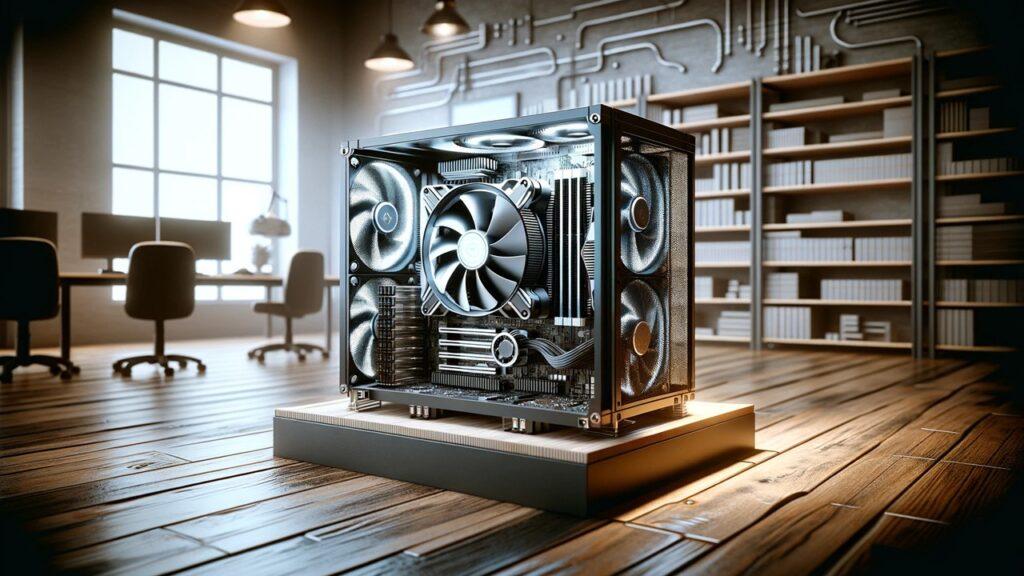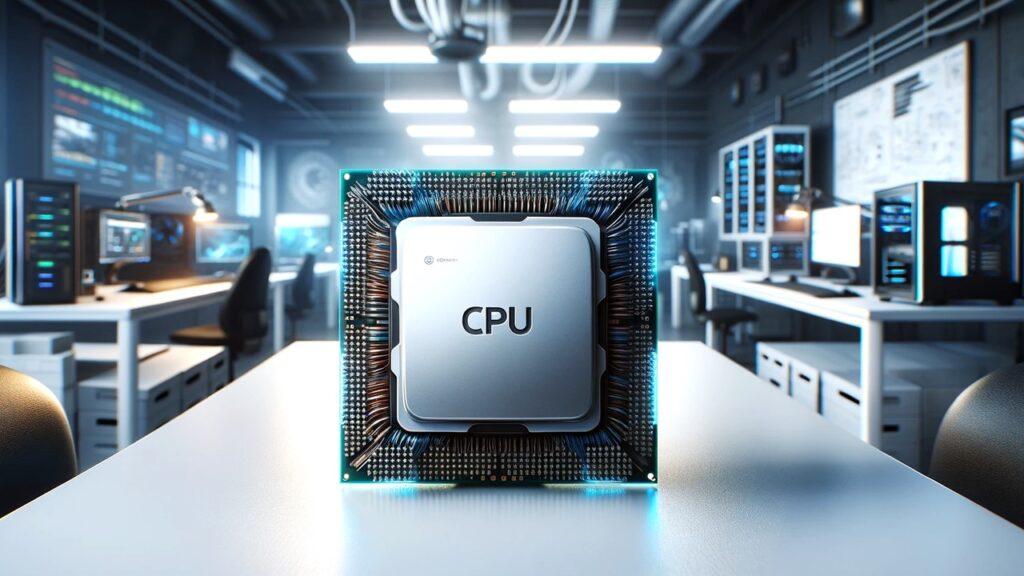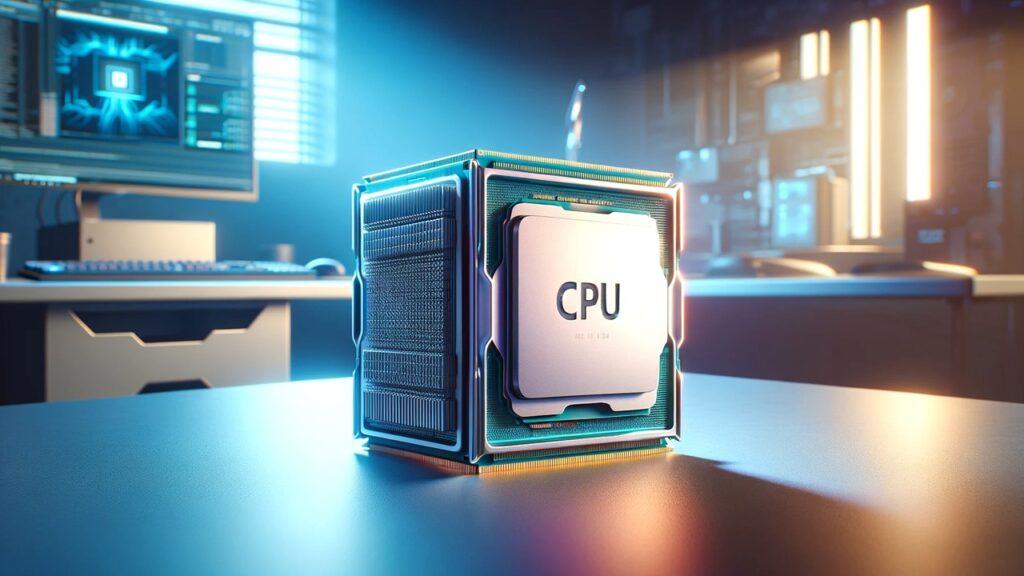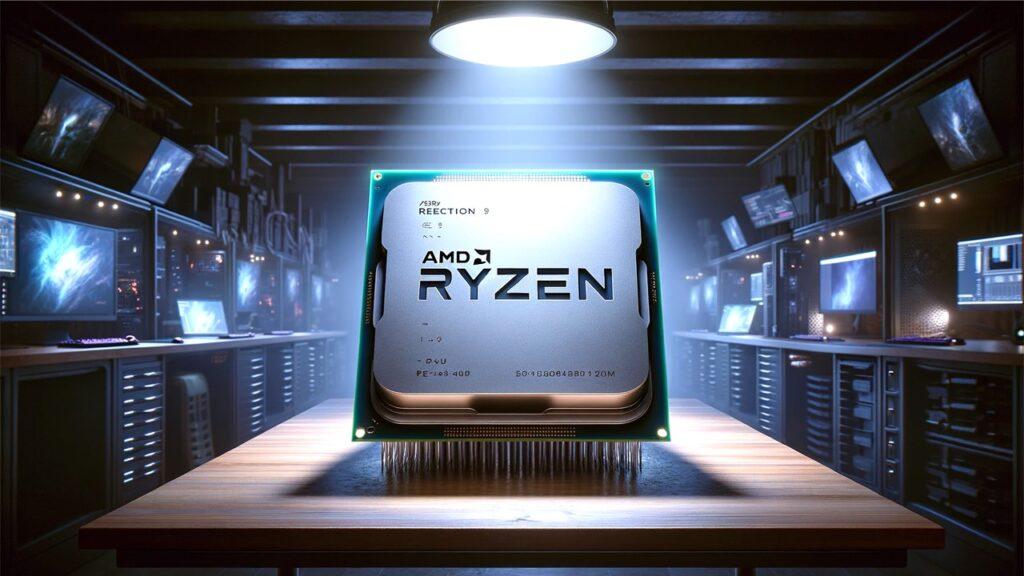
As you prepare for a session of endless gaming or settle in for some serious work, tweaking your BIOS settings might just be the trick to maximize your CPU’s performance. Think of BIOS like the quiet powerhouse of your computer, springing into action the moment you press the power button, setting the pace for peak performance. By adjusting these settings, you’re not just nudging your system towards greater efficiency; you’re customizing it to fit your personal tech adventures. So, why not approach optimizing your BIOS with the same zest as you would a new tech toy or an exciting software update? After all, optimal fine-tuning BIOS settings for maximizing CPU performance could be your gateway to a smoother and more responsive computing experience, making every task feel like a breeze.
What are BIOS Settings?
Diving right into the core of your computer’s capabilities, let’s unravel the mystery of BIOS settings. BIOS, or Basic Input/Output System, serves as the backbone of your computer, orchestrating the startup process the moment you power up. This essential firmware is the gatekeeper to the hardware settings of your computer, providing the first line of communication between the computer’s operating system and its hardware components.
Among the myriad settings within the BIOS, certain ones play pivotal roles in boosting your CPU’s performance. These settings allow you to manage the CPU’s clock speed, voltage, and other crucial parameters that influence how fast and efficiently your processor runs. Adjusting these can mean the difference between a sluggishly performing machine and a swift, efficient computing powerhouse. Furthermore, mastering your BIOS settings ensures that your system operates within safe thermal and power limits, preventing overheating and potential damage.
Moreover, the relevance of BIOS settings extends beyond simple hardware functionality. For enthusiasts looking to push their systems through overclocking, understanding and manipulating these settings becomes even more critical. Whether you’re tweaking a budget CPUs for gaming or fine-tuning high-end 4K video editing rigs, the BIOS holds the key to unlocking maximum potential.
BIOS settings are not just a set of obscure options hidden behind a restart; they are the essential dials and switches that can optimize your computing experience, tailored to your needs and aspirations.
Why BIOS Settings Matter for Your CPU
Imagine setting off on a road trip without tuning your car; that’s what ignoring BIOS settings in your computer is like. The impact of BIOS on your CPU’s speed and efficiency cannot be overstated. By fine-tuning these settings, you can significantly enhance how quickly your CPU processes tasks, which is crucial whether you’re managing heavy workloads or enjoying high-stakes gaming sessions.
Proper BIOS configurations do more than just speed up your processor—they also contribute to its longevity. By managing settings like voltage and clock speed, you ensure that your CPU operates within its optimal conditions, reducing wear and tear over time. Additionally, efficient BIOS settings help maintain a balance between performance and energy consumption, which can also reduce the heat generated by your system.
For gamers and professionals alike, optimizing BIOS settings could be as vital as selecting the right components. Whether you’re setting up AMD Ryzen CPUs for gaming or configuring servers for intense computational tasks, BIOS settings are the foundation that supports your CPU’s performance. Moreover, for those invested in sustainability, efficient BIOS configurations can also contribute to energy conservation, making your setup not only powerful but also more eco-friendly.
Understanding and managing your BIOS settings are crucial for anyone looking to get the most out of their computer systems. Whether you’re optimizing for performance, longevity, or energy efficiency, these settings offer the control you need to tailor your computing experience to perfectly match your demands and aspirations.
How to Access Your BIOS Setup
Venturing into your BIOS might seem daunting, but it’s a gateway to enhancing your computer’s performance. Accessing the BIOS setup on different types of PCs requires a basic understanding of the startup process and the specific keys that invoke the BIOS menu. For most computers, this involves pressing a key or a combination of keys just after the system powers on but before the operating system loads.
Common keys that are typically used include Delete, F2, F10, and F12. The exact key often depends on the motherboard’s manufacturer. If you find yourself tapping away at the keyboard with no success, a quick glance at your motherboard’s user manual or a visit to the manufacturer’s website can offer clarity. Additionally, for newer machines, especially those that come with Windows 10 or 11, you might need to navigate through the recovery options within the operating system to enter BIOS, as they might use a faster startup process that bypasses the traditional key presses.
Furthermore, troubleshooting access issues usually involves resetting your BIOS settings to default or updating your BIOS firmware. This can resolve many common problems related to startup and access, ensuring your venture into BIOS setup is as smooth as possible.
Critical BIOS Settings to Enhance CPU Performance
When it comes to squeezing every bit of performance from your CPU, the BIOS is your playground. Within this essential firmware lie settings that can significantly impact your processor’s efficiency and stability.
CPU Clock Speed Settings
CPU clock speed is essentially the speed at which your processor executes instructions. It also determines your computer’s performance. Adjusting the CPU clock speed in the BIOS can lead to noticeable improvements in speed, especially for tasks that require a lot of processing power. To adjust this setting, locate the CPU Frequency or Multiplier option in your BIOS. Increasing the multiplier will boost your CPU’s operating frequency, thus enhancing its performance. Remember, however, to monitor the system’s temperature and stability, as higher speeds can lead to increased heat production.
Voltage Settings for CPU Stability
The stability of your CPU is closely tied to its voltage settings. To ensure the CPU receives the right amount of power needed to perform at optimal levels without overheating, correct voltage is required. In the BIOS, you’ll find these settings under terms like CPU VCore or Voltage Adjustment. It’s important to approach voltage changes with caution; even small adjustments can have significant impacts. Always increase voltage in small increments and test for stability with each change.
Enabling Turbo Boost or Hyper-Threading
Turbo Boost and Hyper-Threading are technologies developed by Intel to enhance CPU performance. Turbo Boost allows your CPU to run above its base operating frequency, whereas Hyper-Threading enables more efficient handling of tasks by creating virtual cores. Enabling these features can significantly enhance your system’s multitasking abilities and responsiveness. These can typically be activated in the BIOS under the Advanced CPU Features menu. Turning these on can give your system a smooth and swift performance boost, perfect for demanding applications and multitasking.
Fine-tuning these BIOS settings not only sharpens your CPU’s performance but also tailors your computing environment to your specific needs and tasks. Whether you’re gaming at high frame rates, rendering complex video files, or running intensive software, these BIOS adjustments can provide the stability and efficiency you need. Just like a well-oiled machine, a well-configured BIOS setup ensures your system runs both smoothly and swiftly, giving you an edge in all your computing endeavors.
Adjusting Memory Timings and Speeds
Memory timings play a crucial role in your computer’s performance, particularly in how swiftly it processes tasks. These settings in the BIOS, known as CAS Latency, RAS to CAS Delay, and others, dictate the responsiveness of your RAM. By fine-tuning these timings, you can significantly enhance your system’s efficiency, especially in memory-intensive applications.
To adjust RAM settings in the BIOS, restart your computer and access the BIOS menu. Look for a section labeled Memory Settings or DRAM Configuration. Here, you’ll find various timings you can tweak. It’s wise to proceed with caution; small changes can have large impacts. Always consult your RAM’s specification for recommended timings or use automatic configuration tools provided by some BIOS to safely optimize settings. After adjustments, ensure to run stability tests to prevent any potential system crashes.
Optimal BIOS Settings for Different Types of CPUs
Each type of CPU, from gaming powerhouses to energy-efficient processors for everyday use, benefits from tailored BIOS settings. Understanding and applying the right settings can drastically improve your computing experience.
Settings for High-Performance Gaming CPUs
For the adrenaline junkies and gaming enthusiasts out there, squeezing every bit of performance from your gaming CPU is paramount. Adjust settings like CPU Multiplier and DRAM Frequency to push your processor and memory to their limits. Enabling XMP (Extreme Memory Profile) can also optimize RAM performance with predefined profiles. This targeted tweaking not only enhances frame rates but also ensures smoother gameplay. Remember, more power means more heat, so monitor your system’s temperature closely.
Settings for CPUs in Workstations
In a professional setting, where stability and efficiency reign supreme, BIOS settings must be tuned to maintain a balance between performance and reliability. Adjust the CPU VCore slightly below the standard specification to reduce power consumption without sacrificing significant performance. Additionally, enabling features like ECC (Error Checking and Control) for RAM can prevent data corruption, crucial in professional environments. These adjustments ensure that your workstation operates efficiently, handling large tasks without faltering.
Energy-Efficient Settings for Everyday Use CPUs
For everyday users, optimizing BIOS settings for energy efficiency can extend the lifespan of your components and reduce your energy bills. Features like EIST (Enhanced Intel SpeedStep Technology) and AMD Cool’n’Quiet should be enabled to adjust CPU speed according to workload, thereby saving energy. Setting your RAM to operate at standard frequencies and enabling power-saving modes for other components can also contribute significantly to overall energy efficiency. These settings help in maintaining an optimal balance between performance and power usage, ideal for general use.
Whether you’re a gamer looking for that competitive edge, a professional seeking dependable performance, or a casual user aiming for efficiency, the right BIOS settings can make a world of difference. Dive into your BIOS with confidence and customize your settings to fit your specific needs, ensuring your CPU performs optimally under any circumstances.
Testing and Stability: Ensuring Safe CPU Performance
After fine-tuning your BIOS settings, verifying that your adjustments enhance performance without compromising system stability is crucial. Testing CPU stability might sound technical, but it’s akin to checking your car’s brakes after a tune-up—necessary and reassuring. To embark on this, you’ll need reliable tools and methods that can stress-test your CPU and ensure that it operates smoothly under various conditions.
Start by utilizing stability testing software such as Prime95, AIDA64, or IntelBurnTest. These tools push your CPU to its limits, simulating high-demand scenarios that reveal any potential stability issues. Run these tests for a few hours; if your system remains stable without crashes or overheating, your settings are likely in good shape. Moreover, keep an eye on temperature and performance metrics using hardware monitoring tools like HWMonitor or Core Temp. These applications provide real-time data on your CPU’s thermal performance and power usage, which are vital in assessing the impact of your BIOS tweaks.
Furthermore, should any instability issues arise, consider revising your BIOS settings. Adjusting the CPU voltage, tweaking the memory timings, or scaling back on the overclock might be necessary to achieve a stable balance. Remember, the goal is not just to maximize performance but to ensure that your system is reliable and durable.
BIOS Updates: Keeping Your CPU at Peak Performance
Keeping your BIOS updated is as essential as regular software updates on your smartphone—it enhances functionality, adds new features, and patches vulnerabilities. BIOS updates often bring performance improvements, compatibility with newer hardware, and sometimes, critical security updates that protect your system from vulnerabilities.
To safely update your BIOS, first visit your motherboard manufacturer’s website and download the latest firmware version compatible with your CPU and motherboard. Most manufacturers provide a utility that can be run within Windows to update the BIOS, or you can manually update via a USB flash drive in the BIOS settings menu. Before proceeding, ensure all your data is backed up, as a failed BIOS update can render your system unbootable.
Moreover, during the update process, ensure that your computer is connected to an uninterrupted power supply. A power outage during a BIOS update could lead to catastrophic system failure. After updating, enter the BIOS to confirm that all settings are intact and adjust them if necessary. This ensures that your system benefits fully from the update, maintaining optimal performance and compatibility with all connected hardware.
The path to enhanced CPU performance is not just about making adjustments but also about ensuring these changes contribute positively without introducing new problems. Regular testing and updates are the keystones of maintaining a robust and efficient computing environment, allowing you to rely on your system for both everyday tasks and intensive computing challenges.
Troubleshooting Common BIOS and CPU Issues
Venturing into the BIOS for performance tweaks is like fine-tuning a high-performance sports car: the adjustments can lead to exhilarating performance boosts but also introduce some hiccups along the way. Knowing common problems that might arise after tweaking BIOS settings is essential for maintaining a stable system. Whether it’s system instability, boot failures, or overheating, the right diagnostic steps can swiftly guide you to a solution.
Firstly, if you encounter a boot failure or your system doesn’t start, resetting the BIOS to default settings is a wise initial step. This can often resolve issues caused by overly ambitious tweaks. You can reset the BIOS directly from its menu or by removing the CMOS battery for a minute before reinserting it, which clears any settings that may be causing issues. Moreover, if your system is unstable or overheats during operations, revisiting your CPU voltage and clock speed settings should be your next move. Adjusting these down a notch can help stabilize your system and reduce thermal stress.
Furthermore, keep BIOS firmware updated as manufacturers often release updates that fix bugs and improve stability. If problems persist, consulting online forums and the user community can be invaluable, as many users share solutions and experiences that might relate to your specific issues.
Wrapping It Up!
Throughout this exploration into optimizing BIOS settings for CPU performance, we’ve delved into how each adjustment can turn your computer into a more robust and efficient machine. From understanding what BIOS settings do, to applying them for different types of CPUs, and ensuring their stability through proper testing—each step is a move towards personalizing your computing experience.
Experimenting with BIOS settings offers a unique opportunity to tailor your system’s performance to your specific needs. Whether you’re a gamer seeking that extra edge, a professional requiring stability and efficiency, or an everyday user looking for reliability, tweaking your BIOS can significantly influence how well your system meets your demands.
Moreover, while the journey into BIOS configuration can be technical, it’s also rewarding. It encourages a deeper understanding of your computer’s inner workings, fostering a connection that goes beyond everyday use. Therefore, dive in, adjust cautiously, and remember that the goal is to find the sweet spot where your CPU’s performance aligns perfectly with your expectations.
Remember, the world of BIOS and CPU settings is intricate and can be as challenging as it is rewarding. Keep learning, keep tweaking, and keep pushing the boundaries of what your computer can do, always ensuring to tread carefully to maintain the harmony between power and stability.
Related FAQs
Can BIOS Settings Affect Gaming Performance?
Yes, BIOS settings can significantly affect gaming performance by adjusting CPU and RAM speeds.
Is It Safe To Change BIOS Settings?
It’s safe to change BIOS settings as long as changes are made cautiously and within hardware specifications.
What Should I Do If My Computer Won’t Boot After BIOS Changes?
Reset the BIOS to default settings to resolve boot issues caused by incorrect settings.
How Often Should I Update My BIOS?
Update your BIOS only when necessary, such as to fix bugs, improve stability, or support new hardware.
Can Overclocking Damage My CPU?
Overclocking can lead to higher temperatures and voltage that may shorten CPU life if not managed properly.

At our core, we’re a group of passionate tech lovers, just like you. We dive deep into the world of tech, especially when it’s about building PCs that perform. We try to provide as much value to the readers with our information and how to blog articles as possible. For affiliate articles our honest and transparent reviews of essential tech products are rooted in real-world experience. We take great satisfaction in offering unbiased evaluations, ensuring that you can make informed decisions when investing in your desired techs. As an affiliate website, we may earn a small commission from some of the products we feature. However, rest assured that our opinions are not influenced by this, and your trust is always our main priority.




